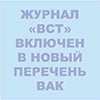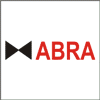|
№5|2014 WASTEWATER TREATMENT bbk 000000 UDC 628.356 Causes and methods of control of foam formation in aeration tanksSummaryThe phenomenon of foam formation caused by the development of filamentous microorganisms is a common problem observed at the wastewater treatment facilities. Foam types, microorganisms responsible for activated sludge bulking and foaming are described. The causes stimulating mass growth of filamentous microorganisms in aeration tanks: high concentration of grease and oil products in wastewater, high sludge age and low concentration of dissolved oxygen in aerobic zones of aeration tanks have been analyzed. The experts of R&D Centre of «Mosvodokanal» OJSC developed the criteria of evaluating the number of filamentous nocardioformic actinomycetes in the process of microscopic investigation of the sample. The simple and practical method of quantitative determination of activated sludge filamentous microorganisms developed and used in «Mosvodokanal» OJSC is presented. Special attention is paid to the methods used in the world practice for prevention and elimination of foaming in aeration tanks: improvement of primary settling tanks operation, sludge age control, optimization of dissolved oxygen concentration, chlorination, the use of extractors, surface foam traps, anti-foaming agents, coagulants and polymers. The analysis of world practice gives evidences that methods of foam control shall be selected with account of the specific features of the technology used and parameters of incoming wastewater. Comprehensive measures including both short-term and long-term methods of foam control turn to be most efficient. In connection with global prevalence of foaming phenomenon at the biological municipal wastewater treatment facilities it seems appropriate to take into account the technical and technological means of foam elimination already at the stage of designing treatment facilities. Key words biological treatment , activated sludge bulking , filamentous bacteria , anti-foaming agent , foaming , wastewater The further text is accessible on a paid subscription. Список цитируемой литературы
|




Journal VST
| Main page |
Archive of Journals
 2014 2014
 Number 1 Number 1
 Number 2 Number 2
 Number 3 Number 3
 Number 4 Number 4
 Number 5 Number 5
 Number 6 Number 6
 Number 8 Number 8
 Number 9 Number 9
 Number 10 Number 10
 Number 11 Number 11
 Number 12 Number 12
 2017 2017
|
| For authors |
| Regulatory documents |
| Literature novelties |
| Exhibition |
| Contacts |
| Site map |



